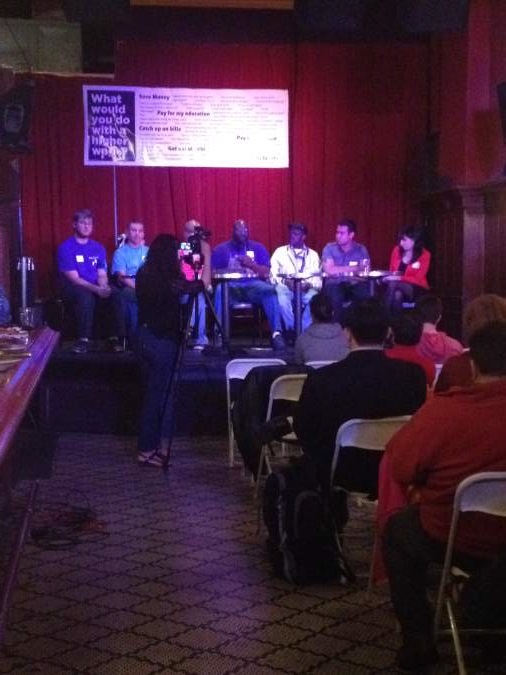Since opening in 1991, The Moore Center for Eating Disorders has witnessed a tenfold increase in the number of male clients it serves, with men now accounting for 10 percent of the Bellevue clinic’s patients. But specialists there believe the population will continue to grow, partly as a result of the wars in Iraq and Afghanistan.
“I don’t think I’ve seen any veterans yet, but as more people are coming back from the Middle East, they’re going to cope with [the trauma)]by establishing eating disorders,” says Neeru Bakshi, a Moore Center psychiatrist.
Although both male and female veterans are susceptible to restricting their diets as a means of asserting control over chaotic personal circumstances, Bakshi says a gradually improving understanding of eating disorders could result in a spate of new diagnoses involving men. For example, the forthcoming edition of the Diagnostic and Statistical Manual of Mental Health Disorders (DSM) will no longer list cessation of menstruation as a diagnostic criterion for anorexia.
“That was very limiting,” Bakshi says of the old definition. “Hopefully, by changing the criteria, it will open up providers’ eyes to the problem.”
According to recent estimates, 20 percent of anorexics are men. Although it’s not clear why the number’s on the rise, specialists say men aren’t immune to the social pressures that make some women want to reshape their bodies. “You hear about how Barbies are bad,” Bakshi says. “G.I. Joes are kind of the same thing. You need to look chiseled.”
Getting proper treatment for eating disorders is a difficult task, since in-patient treatment centers are so scarce that the Moore Center—now undergoing expansion to accommodate an additional 60 patients a week—routinely serves clients from across the Pacific Northwest.
Although the Mental Health Parity Act has made treatment much more affordable, it’s still not numerically feasible for every Washingtonian dealing with an eating disorder to enroll in a residential program. As Washington’s only in-patient facility, the Moore Center currently serves 100 clients.
“There’s need and demand, and it’s really sad,” says Liz Dill, director of operations.
But difficulties are compounded for male anorexics, since fewer than half of residential treatment facilities are open to men. “Most men with eating disorders are living with them quietly and painfully,” Mark Warren, founder of the Cleveland Center for Eating Disorders, was quoted as saying in a lengthy GQ story about the issue. “I would guess at least three-quarters of them don’t get any treatment. They’re suffering without help.”
The Moore Center has always admitted men, although Bakshi says only a small fraction of male anorexics actively seek help. “Men don’t go into the doctor until they have a limb falling off,” she says.
To make the Moore Center more welcoming to men, therapy group leaders use gender-neutral language and acknowledge male perspectives.
“Women may think ‘I’m dissatisfied with my butt or my breasts,’ ” Bakshi says. “Men look at things more globally. We try to have equal discussions.” E
hraskin@seattleweekly.com







